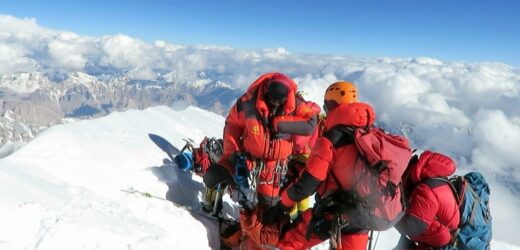- The “Death Zone” is a region near the top of world’s tallest mountains that earns the name because humans aren’t meant to survive there.
- Vanessa O’Brien is an expert mountaineer and the fastest woman to climb the highest peak on every continent.
- O’Brien explains what it felt to be in the “Death Zone,” 26,000 feet above sea level.
- The human body can’t function normally in the Death Zone because there isn’t enough oxygen at that elevation. Digestion can begin to shut down and some people have adrenal failure.
- Visit Business Insider’s homepage for more stories.
Following is a transcript of the video.
Vanessa O’Brien: 26,000 feet or 8,000 meters, they do call the “death zone.” The death zone is, you know, a part of what happens at height in the mountain.
You have to remember that a mountain at 8,000 meters, 26,000 feet is the very, very top of the troposphere. So you’re hitting the troposphere and the stratosphere, this is where planes fly.
You’re that high. Humans aren’t meant to survive there. So when you are climbing there, even if you are on oxygen, oxygen is not like oxygen in a hospital.
You’re at a two liter flow rate mixed with ambient air, this is not pure oxygen. The small amount of oxygen we take just to offsets the exertion level and prevents any frostbite getting to the extremities, or what we like to call “digits.” But it is by no means, something that would protect us from something like the death zone.
In the “death zone,” really, digestion starts to shut down, you’ll have adrenal failure, there’s not enough oxygen really to prevent cognitive failure.
You’ll have adrenal failure, there’s not enough oxygen really to prevent cognitive failure. You know, the brain and the lungs are getting just basically the minimum that they need.
I like to think of it as really a ticking time bomb of what you really need, maybe 24 hours, up and out. Anything over that, you really risk heading to a memorial at the bottom of the mountain.
That’s why on K2, I was worried about our team. Our team’s summit was 16 hours. You know, when I’m looking at that 24-hour window, knowing that we’re coming down at night, you know, that was 23-hours. I think that threaded a needle very, very closely.
EDITOR’S NOTE: This video was originally published in October 2017.
Source: Read Full Article


